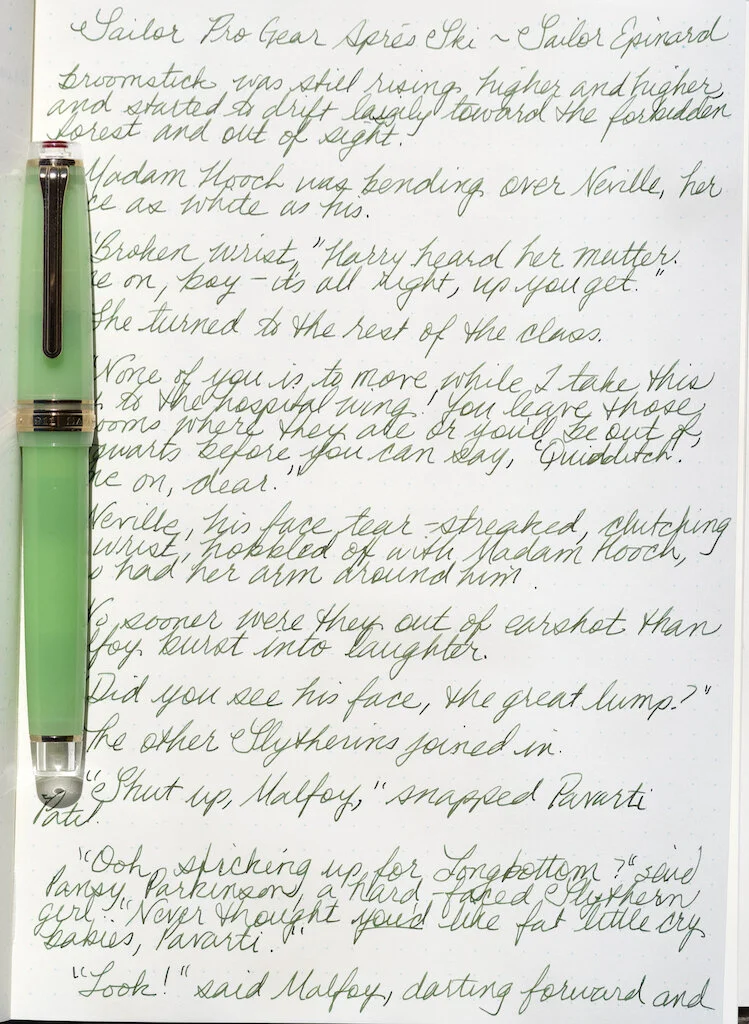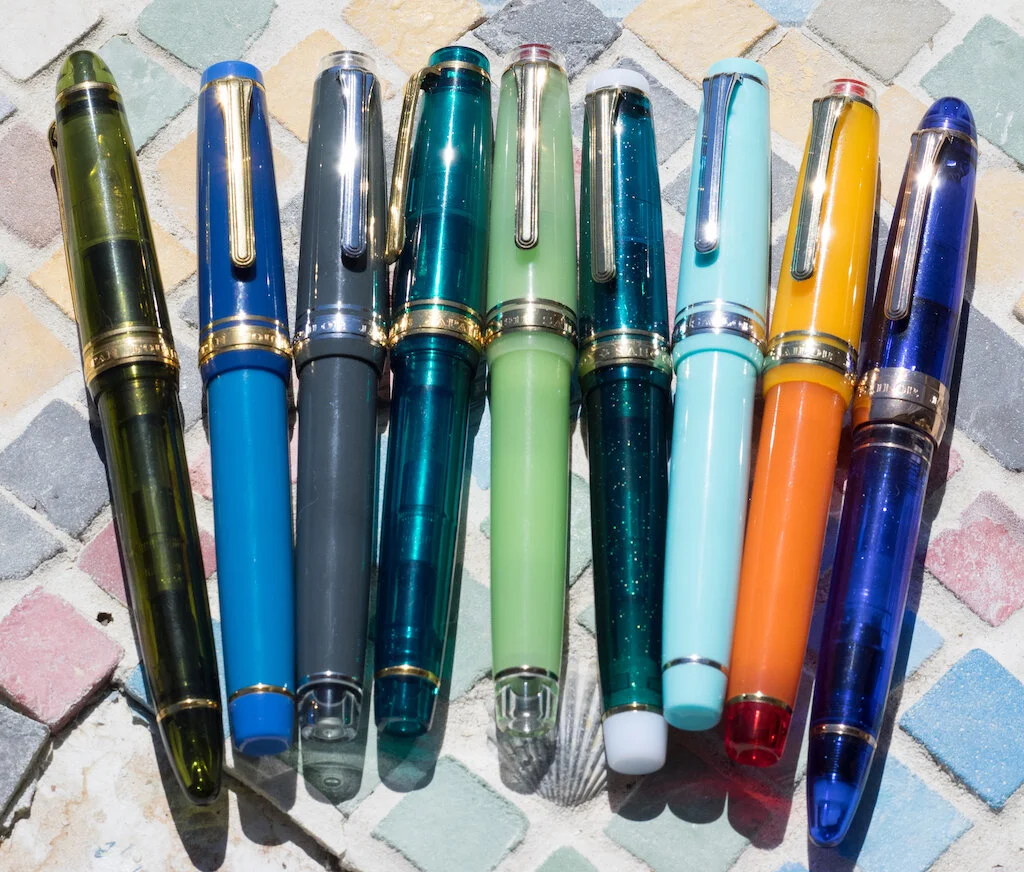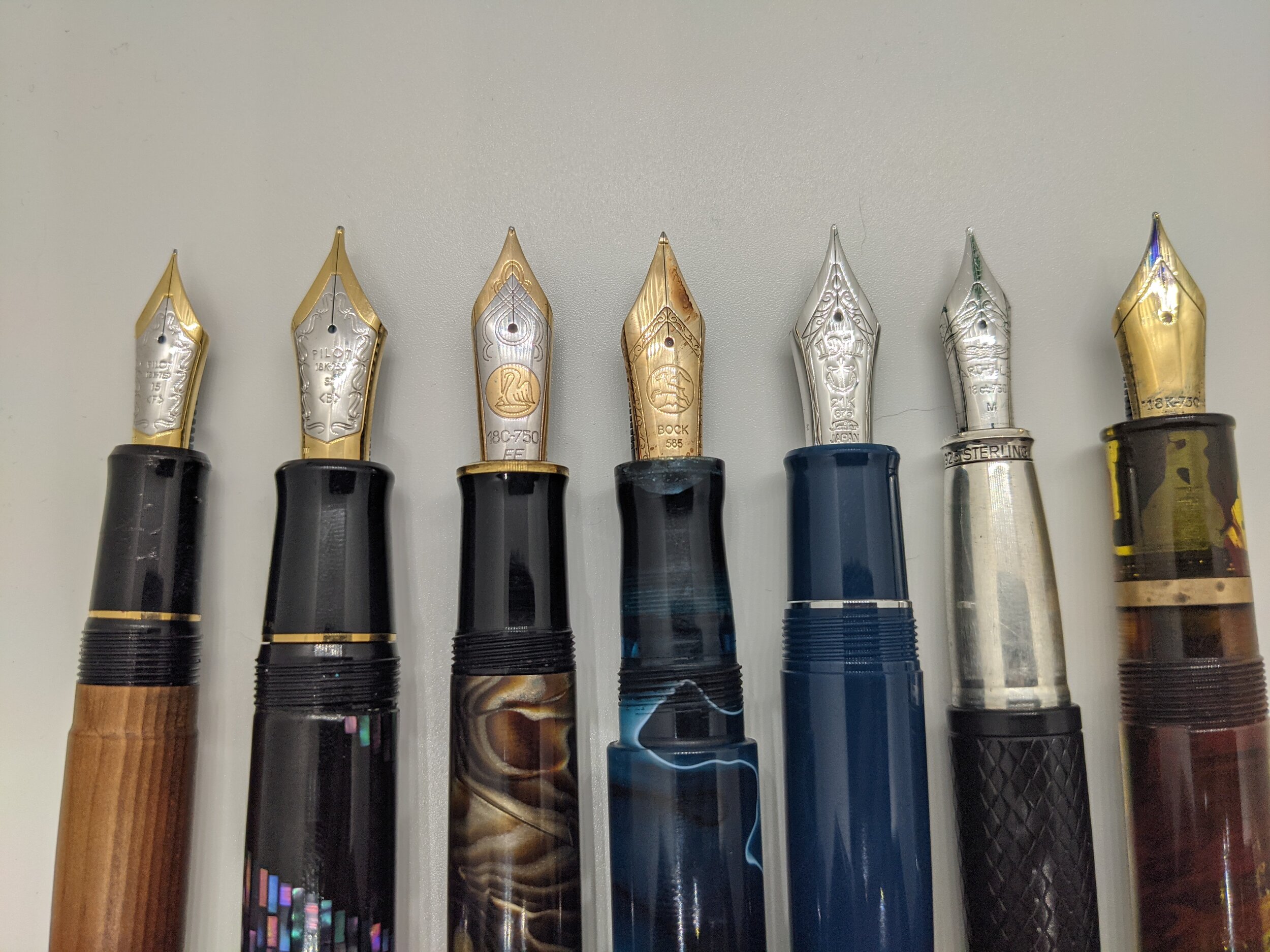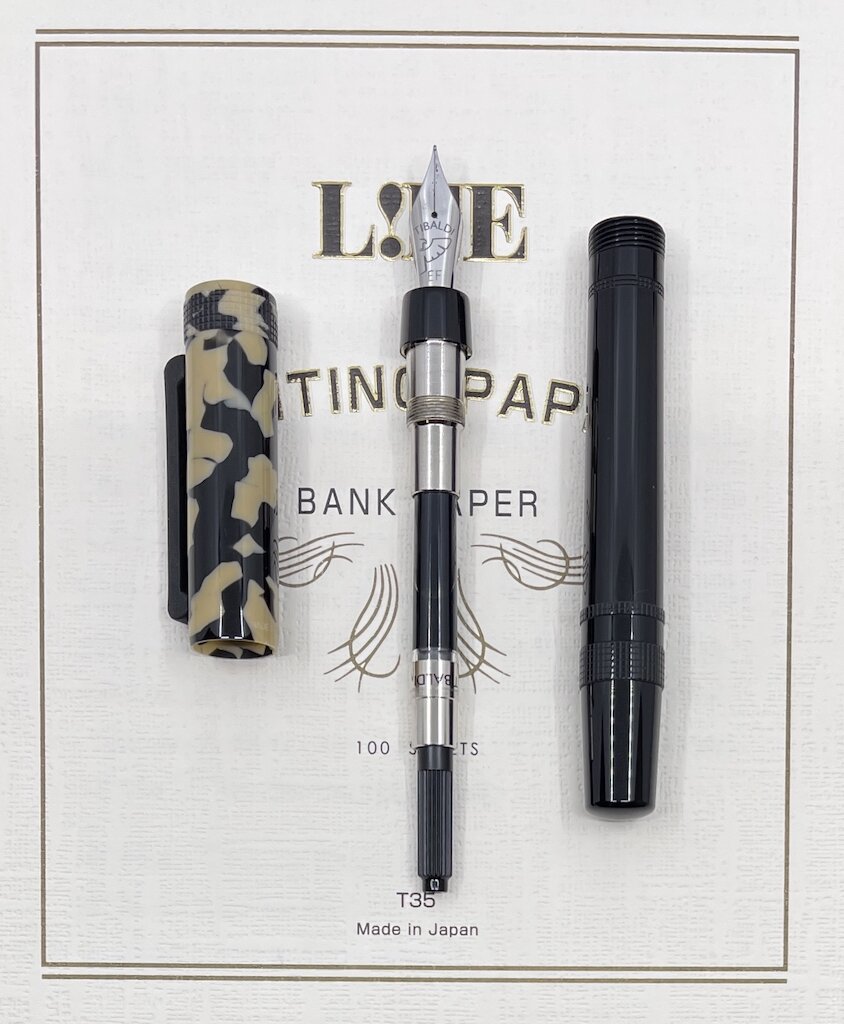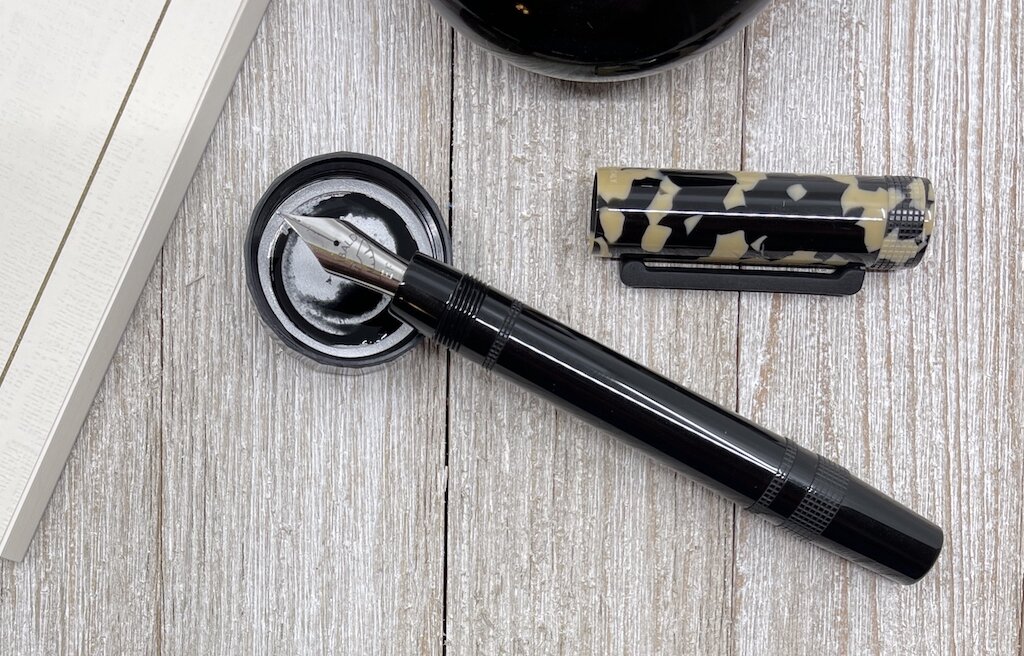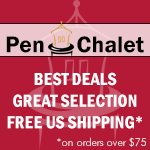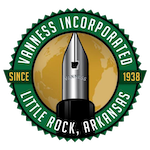(Susan M. Pigott is a fountain pen collector, pen and paperholic, photographer, and professor. You can find more from Susan on her blog Scribalishess.)
The Sailor Pro Gear Cocktail Series has been all the rage the past few months, ever since Sailor reissued all the pens as a set and individually. I already owned the Tequila Sunrise (reviewed here), and I managed to resist the urge to buy any of the reissued pens even though I desperately wanted the Blue Lagoon and Après Ski. That is, I managed to resist, until all the Blue Lagoons were gone and I found what I thought might be the last Après Ski on the planet at CultPens. I succumbed even though it was only available in a fine nib (not my preference with Sailor nibs).
The pen arrived in the usual Sailor box, and since all the boxes look the same, I didn't include photos here. If you happened to purchase the entire set, you got a spiffy acrylic display case with your insta-collection.
Après Ski means "after skiing," and the name apparently refers to a variety of cocktails one can enjoy after you sweep into the bar from the slopes. The color of this pen suggests some sort of mint-based cocktail. The clear finials might symbolize either the ice in the cocktail or the crystal snow from the peaks.
Let me clarify that I did not buy this pen because of any love for skiing. No. My one skiing experience on the slopes in Santa Fe, New Mexico, on New Year's Day over twenty-five years ago was a complete and utter disaster. Imagine a brand-new skier who rocked the bunny slopes only to be taken on the ski lift to the very top of the mountain. Imagine this brand-new skier having her first all-out panic attack on the ski lift (fear of heights), tumbling face first off the ski lift, and being dragged out of the way of other skiers. Then envision said skier snow plowing (in tears and terror) down the mountain whilst snow boarders swish madly past, blowing scornful snow in her face. See how she eventually plops down beside a tree and covers her head whilst her husband yells at her to keep going? Somehow I made it down that mountain, but I've never skied again.
I bought the Après Ski purely for its delicious, creamy soft green color. It reminds me of spring (not snow) and tender shoots of grass and new leaves.
The pen has a translucent cap with gold trims. The top finial is clear with a red and gold anchor logo that really pops against the more subtle colors of the pen.
The body of the pen is also translucent, but not as much as the cap. It may be that the plastic of the barrel is simply thicker than the cap or, perhaps, it was purposefully made more opaque. The bottom finial is clear.
The Sailor Pro Gear is a small pen. It is 5 inches/128mm capped, 4.6 inches/116mm uncapped, and 5.9 inches/150mm posted. The grip is 11mm, and the barrel at its widest is 13mm. It weighs 25 grams inked and posted and 16.62 grams inked without the cap.
In my opinion, the weakest and worst feature of Sailor pens is the converter. I. Hate. Sailor. Converters. Not only do they hold a dinky amount of ink, but this particular converter unscrews itself when I try to fill it with ink. It's a compete mess and extremely frustrating.
"@##*& it, Sailor! Why can't you engineer a decent converter???”
The nib is a two-tone 21k gold fine. I think Sailor nibs are absolutely gorgeous, and this one is no exception. The tines are perfectly aligned, and, with a wet and dark ink, they produce a smooth, visible line.
A fine Sailor nib writes like an extra fine, and it has that famous Sailor feedback. Although I don't mind the feedback, the fine nib does not do my handwriting any favors.
If I write in teeny, tiny caps, like Brad, this nib is perfect! But that's not my usual style.
For longer periods of writing, the fine nib allows me to fit lots of words on the page, but my hand fatigues more quickly than with broader nibs. I think the finer nib causes me to write in a more cramped fashion.
This is a great nib for detail work. I planned to do a whole page of the tiny woven pattern. I gave up after filling half the page. But, hey, it looks pretty cool!
Most of the Sailor Pro Gear Cocktail Series pens are sold out by now. You can find a few of the less popular colors, but Après Ski is almost impossible to locate (except on eBay and for ridiculous prices). I somewhat regret not buying the Blue Lagoon as well (or instead of) the Après Ski. But over the past couple of years, I've managed to buy way too many Sailors, most of them Pro Gears.
See what I mean? And that's why I call myself a pen addict.
(I purchased the Sailor Pro Gear Après Ski with my own funds from CultPens.)
Enjoy reading The Pen Addict? Then consider becoming a member to receive additional weekly content, giveaways, and discounts in The Pen Addict shop. Plus, you support me and the site directly, for which I am very grateful.
Membership starts at just $5/month, with a discounted annual option available. To find out more about membership click here and join us!

















